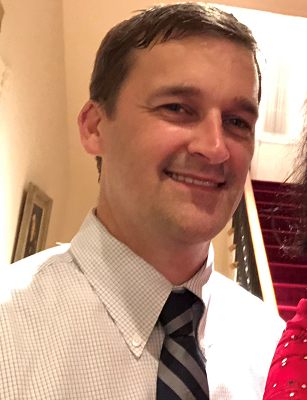 Timothy Bole, a physicist from the U.S. Naval Surface Warfare Center’s Carderock Division (Potomac, Maryland, USA), was recently honored for his contributions to corrosion control with one of the Dr. Delores M. Etter Top Scientists and Engineers of the Year awards for 2020.
Timothy Bole, a physicist from the U.S. Naval Surface Warfare Center’s Carderock Division (Potomac, Maryland, USA), was recently honored for his contributions to corrosion control with one of the Dr. Delores M. Etter Top Scientists and Engineers of the Year awards for 2020.
Bole’s claim to recognition was for finding a proof-of-concept of a non-traditional approach to control the electric signatures of naval vessels. For the last six years, according to the Navy, Bole has dedicated himself to electromagnetic signature work and has become recognized as a national and international expert in underwater electric field theory. According to the nomination packet, the system he designed is the first-ever system to lower signatures that is not based on a modification of the corrosion-controlling impressed current cathodic protection (ICCP) system.
“Electric signatures are very much tied to corrosion currents on seawater-born platforms,” Bole says. “One of the things that we always have to think about is what’s going to be the impact on the corrosion state. We can’t have a low electric signature at the expense of causing corrosion.”
Physical modeling to show proof-of-concept for the system was executed at the Naval Research Laboratory’s seawater-testing laboratory at its Marine Corrosion Facility. The system Bole and his team created also uses fewer components than previous ICCP systems, which in turn increases the reliability and maintainability. From the planning stages to post-execution analysis, Bole led the charge to validate the system’s practicality.
“I was driving the effort to demonstrate this technology and pursue it, but I don’t work in a vacuum,” he says. “We had a really good team of people, and everyone deserves some recognition for what we demonstrated last year,” says Bole, who mentioned fellow Carderock team members Albert Barsa and Dan Sherman (contract support) among the key contributors. Bole was also awarded the Warfare Centers’ Innovation Award for his work, which aims to increase the Navy’s warfighting capabilities at a lower cost.
Source: U.S. Naval Surface Warfare Center, navsea.navy.mil.